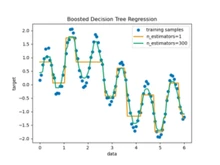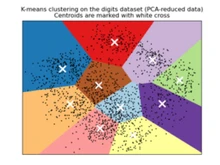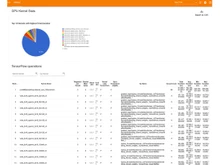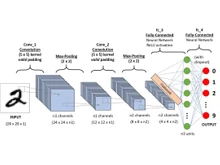When it comes to machine learning and artificial intelligence, two prominent tools that often come in discussion are Scikit-Learn and TensorFlow. Scikit-Learn is a powerful library for machine learning in Python, known for its user-friendly interface and a wide range of algorithms for classification, regression, clustering, and more. On the other hand, TensorFlow is an open-source machine learning framework developed by Google, with a strong focus on deep learning and neural networks.
In this comparison, we will explore the key differences between these tools based on their features, performance, language support, learning curve, project complexity, use cases, framework design, and more.
Scikit-Learn vs. TensorFlow: An Overview
Scikit Learn is a powerful and user-friendly Python library designed for traditional machine learning tasks, offering algorithms for classification, regression, clustering, and model evaluation. Apart from that, it provides an intuitive interface for both beginners and experienced practitioners. Also, its seamless integration with popular data manipulation libraries and comprehensive documentation makes it an ideal framework for rapid prototyping and ML models.
TensorFlow, on the other hand, is an advanced and open-source ML framework specifically tailored for deep learning and scalable computation for complex machine learning projects. It offers support for distributed computing, multi-language compatibility, and native GPU acceleration. Apart from that, TensorFlow enables the seamless training and deployment of large-scale neural networks and deep learning models, emphasizing high performance and efficiency.
Scikit-Learn vs. TensorFlow: Key Differences
Here are some key differences between Scikit-Learn and TensorFlow:
- Scikit-Learn and other Scikit Learn alternatives focus on machine learning tasks while TensorFlow specializes in deep learning and computation.
- TensorFlow emphasizes training and deploying neural networks. In contrast, Scikit-Learn is popular for data preprocessing, model evaluation, and ML tasks.
- Scikit-Learn offers a user-friendly interface and a vast range of algorithms. On the other hand, TensorFlow is tailored for large-scale machine learning projects.
- TensorFlow and a few TensorFlow alternatives provide extensive support for distributed computing and native GPU acceleration. While Scikit-Learn offers limited support.
Scikit Learn and TensorFlow: In Terms of Features
Here is a differentiation between Scikit-Learn and TensorFlow based on different features including algorithm, customization, documentation, integration, support for GPU, and more.
- Algorithm: Scikit-Learn provides a rich set of algorithms for supervised/unsupervised learning, data preprocessing, and model evaluation. In contrast, TensorFlow offers algorithms for deep learning, including neural networks, convolutional neural networks (CNNs), recurrent neural networks (RNNs), and more.
- Documentation: Scikit-Learn offers well-organized documentation with a focus on simplicity and practical examples. While TensorFlow offers extensive documentation for advanced model building and deployment.
- Customization: Scikit-Learn provides limited customization options for complex model architectures and neural networks. Whereas TensorFlow offers extensive customization, allowing users to build or customize neural network architectures and deep learning models.
- Neural Network Support: Scikit-Learn offers limited support for neural networks, as it primarily focuses on traditional ML algorithms. On the other hand, TensorFlow is specifically designed for the implementation and training of neural networks and deep learning models.
- Distributed Computing: The distributed computing capabilities are limited within the Scikit-Learn framework. While TensorFlow offers robust support through its high-level APIs like TensorFlow distributed (TF Distribute) and low-level tensor operations.
- Support for GPUs: Scikit-Learn offers limited support for GPU acceleration through external libraries like cuML. It does not provide native support for GPU computing. TensorFlow, on the other hand, offers native and comprehensive support for GPU acceleration, allowing users to leverage the computational power of GPUs for training and inference tasks.
- Integration: Scikit-Learn integrates with data manipulation and analysis libraries in Python, such as Pandas and NumPy. In contrast, TensorFlow integrates with other deep learning frameworks/tools, and with cloud platforms for distributed training and deployment.
Scikit-Learn or TensorFlow: Flexibility
Scikit-Learn is primarily designed for traditional ML algorithms and offers a range of algorithms for classification, regression, clustering, dimensionality reduction, and model selection. On the other hand, TensorFlow is more flexible in terms of building and deploying various types of ML models including deep learning, reinforcement learning, and custom neural network architectures.
Scikit Learn vs. TensorFlow: Purpose/Project Objectives
Scikit-Learn is well suited for traditional machine learning projects where data is less complex and does not require deep learning capabilities. TensorFlow is ideal for projects that involve deep learning, neural networks, and complex data structures where high performance and scalability are the key requirements.
Scikit-Learn and TensorFlow: Primary Focus
Scikit-Learn is primarily focused on traditional machine learning methods such as linear models, support vector machines, decision trees, and ensemble methods. In contrast, TensorFlow is primarily focused on deep learning, neural networks, and large-scale ML tasks.
Scikit Learn vs. TensorFlow: Language Support
Scikit-Learn offers a strong emphasis on the Python programming language. While it offers limited support for interfacing with other languages through wrappers/extensions, its core functionality is Python-centric. TensorFlow, on the other hand, supports multiple programming languages, including Python, C++, and Java.
Scikit-Learn or TensorFlow: Performance
Scikit-Learn offers good performance for traditional machine learning tasks on medium-sized datasets. Its performance cannot be optimized for large-scale intensive tasks. On the other hand, TensorFlow is designed for high performance, especially in deep learning and neural network applications. It also provides support for performance optimizations, such as XLA (Accelerated Linear Algebra), which helps improve the execution speed of models.
Scikit-Learn vs TensorFlow: Learning Curve
Scikit-Learn has a relatively easy learning curve, which makes it accessible to beginners and individuals who are new to machine learning. On the other hand, TensorFlow involves a steeper learning curve, particularly for deep learning, due to its focus on Neural Networks and model architectures.
Scikit-Learn or TensorFlow: Use Cases
Scikit-Learn is commonly used for tasks like classification, regression, clustering, and model evaluation in traditional machine-learning projects. On the other hand, TensorFlow is used for deep learning applications including image recognition, NLP (natural language processing), time series analysis, and other complex modeling.
Scikit-Learn and TensorFlow: Project Complexity
Scikit-Learn is suitable for projects with moderate complexity and standard machine-learning requirements. Contrarily, TensorFlow is ideal for projects with high complexity, especially that involve large datasets, deep learning, and complex Neural Network architecture.
Scikit-Learn vs. TensorFlow: Framework Design
Scikit-Learn is designed to provide a simple interface for various machine learning tasks, with a focus on ease of use and straightforward implementation. Contrarily, TensorFlow is designed with a focus on flexibility, performance, and complex neural network architectures, providing low-level control over model building and deployment.
Scikit-Learn or TensorFlow: Ecosystem
Scikit-Learn has a comprehensive ecosystem of tools and libraries for data preprocessing, model evaluation, and visualization, including NumPy, Pandas, and Matplotlib. While TensorFlow offers a rich ecosystem of high-level APIs like Keras and TensorFlow Extended (TFX) for producing ML pipelines.
Scikit-Learn and TensorFlow: Ease of Use
Scikit-Learn is known for its user-friendly and intuitive APIs, making it suitable for beginners and rapid prototyping. TensorFlow requires more expertise due to its focus on deep learning and complex neural network architectures, although high-level APIs like Keras improve usability.
Scikit Learn and TensorFlow: Community and Support
Scikit-Learn offers robust community support with comprehensive documentation, tutorials, and a large user base. Similarly, TensorFlow also offers strong community support, extensive documentation, and a wide range of online resources for learning and troubleshooting.
Verdict: Scikit-Learn vs. TensorFlow
In summary, Scikit-Learn and TensorFlow serve distinct purposes in the machine learning landscape. Scikit-Learn excels in traditional machine learning algorithms, offering ease of use, robust language support via Python, and a wide range of tools for standard ML tasks. However, it lacks native support for distributed computing and GPU acceleration.
On the other hand, TensorFlow is tailored for deep learning and scalable computation, providing extensive distributed computing support, multi-language compatibility, high-performance execution, and native GPU acceleration. Therefore, while Scikit-Learn is ideal for conventional ML tasks, TensorFlow is the go-to choose for large-scale, computationally intensive projects and advanced deep learning applications.


 6 Ratings & 0 Reviews
6 Ratings & 0 Reviews

















